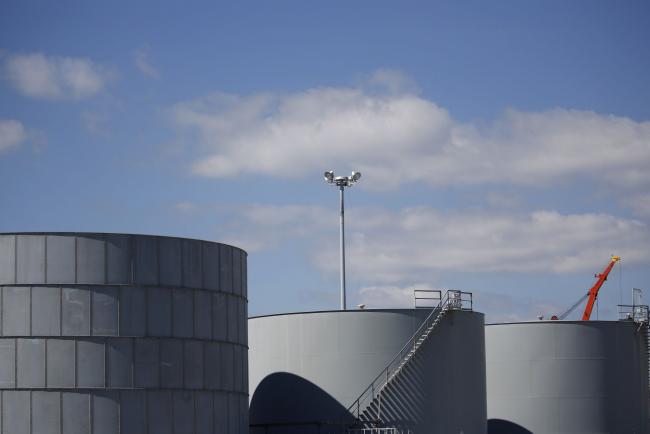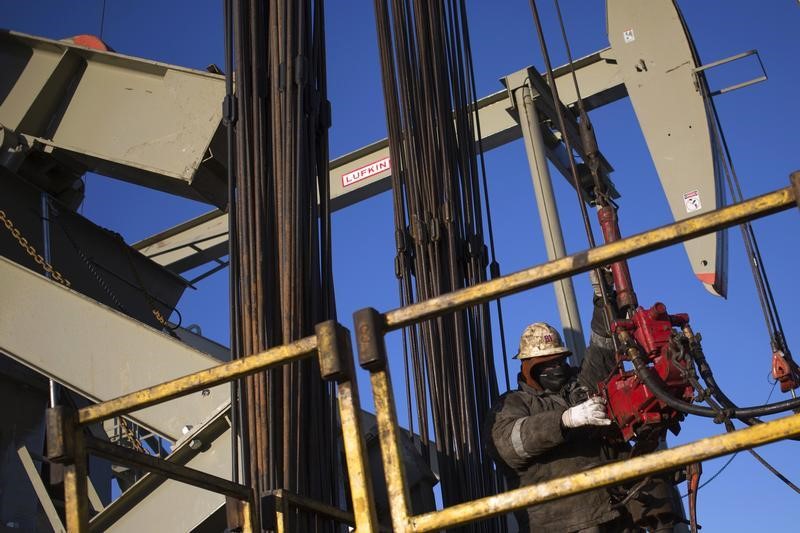(Bloomberg) -- Oil surged to its highest since February after Saudi Arabia pledged to voluntarily cut output by an extra 1 million barrels a day in what Russia’s Deputy Prime Minister described as a “new year gift” to the market.
Futures in New York rose 4.9% on Tuesday after briefly topping $50 a barrel for the first time since the pandemic triggered widespread lockdowns and sent fuel demand plunging. OPEC+ reached an agreement following two days of talks to curb supply over the next two months. Other producers will hold supply steady or make a small increase, delegates said. Russia and Kazakhstan will be allowed to boost output by a combined 75,000 barrels a day in both February and March.
Saudi Arabia’s unilateral cut is “a groundbreaking statement that shows the oil giant is not only ready to bite the bullet and keep taps tight, but it also recognizes the short-term demand risk and is ready to protect its export prices by tightening supply,” said Bjornar Tonhaugen, head of oil markets at Rystad Energy.
The Saudi pledge and the rally in prices may give the U.S. shale industry some room to begin snapping up market share, though financial hardships from the pandemic and investor expectations remain obstacles. It’s an especially sweet gift for U.S. shale drillers, said RBC analyst Helima Croft. Shale stocks subsequently surged.
The S&P index of exploration and production companies jumped as much as 9.3%, with shale producers such as Continental Resources (NYSE:CLR) Inc. and Occidental Petroleum Corp (NYSE:OXY). rising more than 10%.
“The industry has proven time and time again that if prices are strong and there’s opportunity to make some revenue or profit, they’ll probably take it,” said Andrew Lebow, senior partner at Commodity Research Group. “How much that’s going to be remains clearly a major question.”
The rally was also showing up in the oil futures curve. Some of the nearest oil contracts were trading at a premium to longer-dated ones, a bullish structure known as backwardation that indicates strong demand and tight supplies. West Texas Intermediate for December 2021 was trading at a premium of roughly $2 to the same contract a year ahead. So-called timespreads for Brent crude also signaled strength.
“OPEC was a big deal and it happened so quickly, it caught the market by surprise,” said Michael Hiley, head of over-the-counter energy trading at New York-based LPS Futures. “No one knows what the Covid situation is going to be, but OPEC is going to keep controlling production until things are back to normal. They’ve shown us that.”
OPEC+ faces a complex demand outlook as the group decides how to move forward with its output plan month by month. There are signs that parts of the world’s economies are staging a comeback, with a measure of U.S. manufacturing expanding last month at the fastest pace since 2018. But other areas of the demand recovery that had seemed constant are showing some signs of wavering.
Several Asian refiners won’t be getting into long-term supply contracts for fuel sales this year, a sign the region’s energy consumption recovery is far from certain, although a cold snap in the Northern Hemisphere is aiding demand for heating fuels.
The industry-funded American Petroleum Institute reported that U.S. crude inventories fell by 1.66 million barrels last week, according to people familiar with the estimates. If confirmed by U.S. government figures on Wednesday, that would be the fourth straight week of declines. The API report also showed gasoline and distillate supplies rising.
©2021 Bloomberg L.P.

